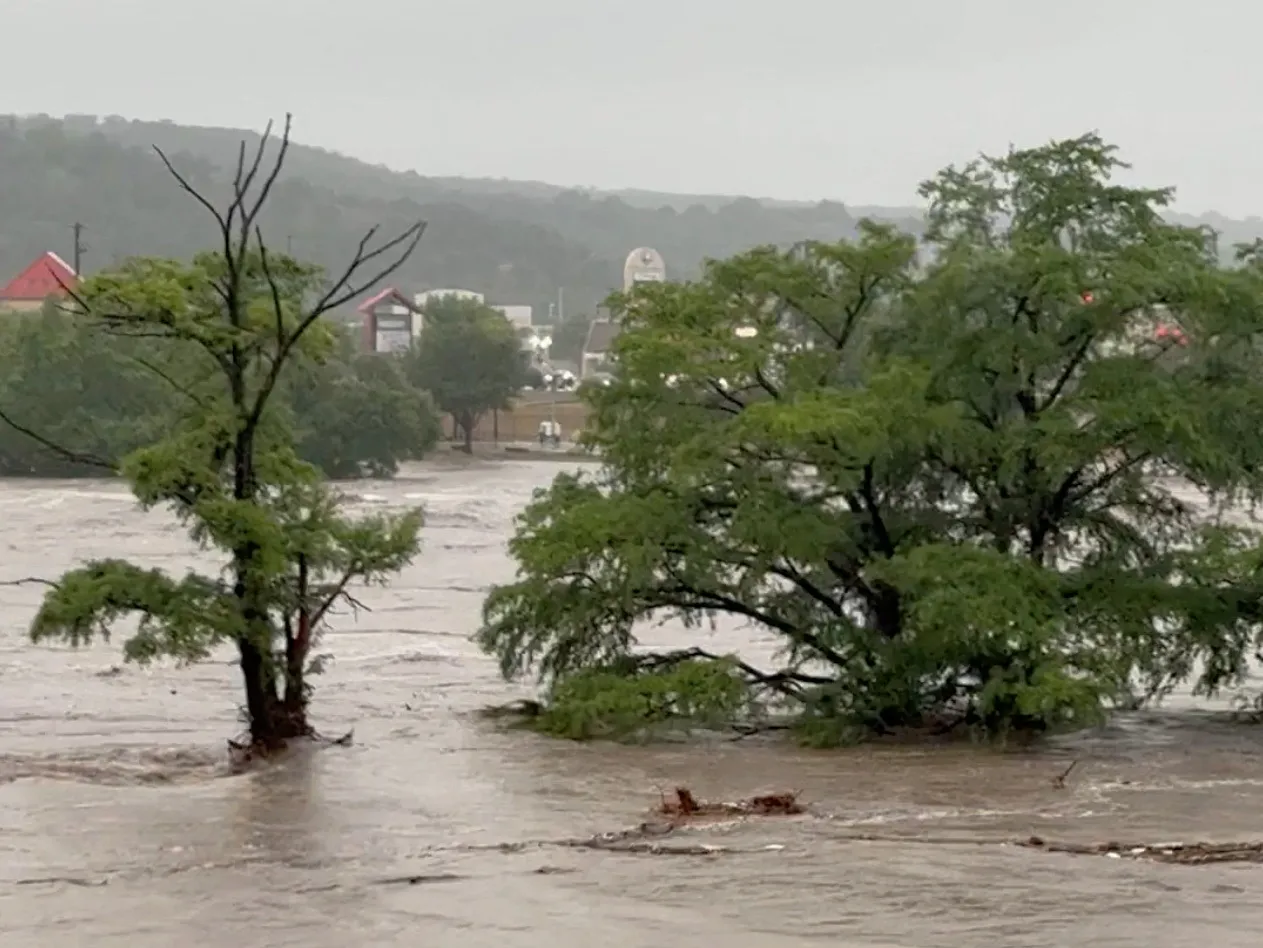In the early hours of July 4, central Texas—particularly Kerr and Kendall counties—was struck by a devastating flash flood along the Guadalupe River. Torrential rainfall, remnants of Tropical Storm Barry, dumped 5–10 inches of rain in just a few hours. The river surged over 22 feet above normal, submerging homes, camps, and cabins with little warning.
What We Know So Far
- Confirmed fatalities: At least 24 people—23 in Kerr County and one in Kendall County—have tragically lost their lives.
- Children missing: Between 23 and 25 girls from Camp Mystic, a Christian summer camp located along the river, remain unaccounted for.
- Rescue efforts: Over 230 individuals have been rescued. Helicopters, boats, and ground teams are working around the clock to locate the missing and bring others to safety.
- Rapid rise: The Guadalupe River rose by more than 22 feet in under two hours, giving residents and campers little time to respond or evacuate.
- Disaster declaration: The Governor of Texas has declared a state of disaster, activating emergency resources and federal assistance to support local efforts.
On-the-Ground Reality
Emergency units—comprising helicopters, boats, drones, National Guard, and local first responders—are racing against time. The primary concern is the safety and location of the missing children from Camp Mystic. Families are anxiously awaiting news at reunification centers, some already mourning loved ones.
Camp Mystic, which hosts approximately 750 girls, did not have an early-warning siren system. County officials have admitted that they were unprepared for the intensity of the flood and that the river’s rise exceeded forecasting models.
Why It Happened
This flood was a result of multiple factors:
- Excessive rainfall: The remnants of Tropical Storm Barry dumped intense rainfall in a very short time.
- Geography: The thin, rocky soil of the Hill Country does not absorb water quickly, causing rapid runoff into the Guadalupe River.
- Broken equipment: Some river gauges failed during the storm, hindering early warning and monitoring.
- Lack of alerts: Several areas, including the summer camp, did not receive timely evacuation orders or flood warnings.
What Comes Next
- Ongoing Search & Rescue: Crews are continuing efforts overnight and in coming days to locate the missing individuals.
- Safety Reviews: There will likely be a full-scale review of infrastructure and emergency alert systems, especially in flood-prone camp areas.
- Public Caution: Authorities have urged the public to avoid the Guadalupe River and remain on alert for further weather-related emergencies.
A Community in Mourning
As the region grapples with this unprecedented tragedy, stories of bravery and resilience are emerging. Rescue teams are risking their lives to bring people to safety. Volunteers are helping displaced families. Local communities are donating food, clothing, and shelter to those in need.
The emotional toll is immense, especially for the families of the missing children. While search teams press forward, hope remains alive in the hearts of loved ones.
Final Thoughts
The Hill Country floods of July 2025 will be remembered as one of Texas’ most devastating natural disasters. This tragedy highlights the urgent need for improved early-warning systems, better emergency preparedness, and stronger infrastructure in rural and camp-heavy regions.
Let us honor the memory of those lost and hold space for the families still waiting for news. And as always, we can turn grief into action—by supporting relief efforts, advocating for safer conditions, and remembering that every second counts in a disaster.
Please keep the people of Kerr and Kendall counties in your thoughts during this difficult time.

